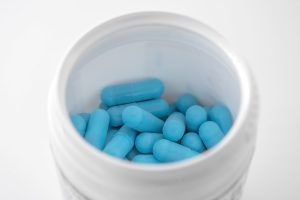Verifiable CDC research has shown that 75% of women develop a yeast overgrowth infection, also known as vaginal candidiasis, at least once in their lifetime. Meanwhile, almost 45% are likely to go through the experience twice or more times in their lives.
Researchers expect the cases of recurrent vaginal candidiasis to affect approximately 158 million women across the globe by 2030. Yet despite this, many people are still unfamiliar with this condition. Many people have asked how can a yeast infection cause pelvic pain? This article looks to answer this query as well as provide other relevant information about this condition you should know about.
What Is a Yeast Infection?
Vaginal candidiasis is a treatable yet painful fungal condition commonly observed among sexually active women. The infection is caused by a strain of yeast or fungus known as Candida albicans. Therefore, the disease is also referred to as candidiasis or candida vaginal infections.
Although the disease is pretty common among sexually active women, candidiasis is not considered a sexually transmitted disease as you can contract the condition without ever having sexual intercourse.
Yeast Infection Symptoms
Vaginal itching is the main symptom of candidiasis. Abnormally thick, white-yellow vaginal discharge that resembles cottage cheese is another prevalent symptom. There are also some cases where the discharge is watery rather than thick and cheese-like.
The typical symptoms of vaginal candidiasis are similar to other vaginal infections like bacterial vaginosis and trichomoniasis. These symptoms may include:
- Swelling around the vagina
- Redness and soreness
- Burning sensation, particularly around the vaginal opening or vulva when urinating
- Pain and discomfort during sexual intercourse
Can a Yeast Infection Cause Pelvic Pain?
Yes, yeast infection may cause pelvic discomfort. Vaginal swelling, burning sensations, and general discomfort may extend to the rest of the pelvic area, causing more significant pain.
How can a yeast infection cause pelvic pain
Vaginal candidiasis may cause pelvic inflammatory disease (PID) if left untreated. In turn, this can cause chronic pelvic ache and discomfort.
Causes of Vaginal Candidiasis
It is important to note that sexual relations generally only increase one’s risk of getting an infection. Unless the sexual partner already has a yeast overgrowth condition, the act itself will not cause the disease.
Women who are pregnant, diabetic, taking estrogen, or overweight also have a higher risk of getting the disease. In addition, an immunocompromised system due to a different illness, such as cancer or HIV, also increases one’s risk of getting a yeast overgrowth infection.
Other factors that may cause or increase the risk of vaginal candidiasis for some women.
They are:
- Hormonal imbalance, especially when nearing menstruation
- High stress
- Antibiotics
- Oral contraceptive pills
- Intrauterine device or IUD
- Tight undergarments
Common Treatments for a Yeast Overgrowth Infection
Over-the-counter (OTC) or prescription antifungal medication for a week or less will resolve vaginal candidiasis. These drugs can be applied as a topical cream, in the form of a suppository, or taken orally.
Some common OTC vaginal creams and suppositories include:
- Miconazole
- Tioconazole
- Clotrimazole
- Butoconazole
Meanwhile, fluconazole and itraconazole are common oral prescription drugs for treating candidiasis.
Home Remedies for Yeast Infections
There are also a few alternatives or home remedies that can prove effective for treating this condition.
These include:
- Use boric acid capsules vaginally for two weeks. However, this can potentially irritate the vagina.
- Take probiotics orally for at least ten days or take probiotic suppositories.
- Take yogurt.
- Apply pure, organic coconut oil directly to the affected area.
- Add apple cider vinegar to your daily diet.
- Apply diluted or watered-down hydrogen peroxide.
What Is Chronic Pelvic Discomfort?
Chronic pelvic ache refers to any pain or discomfort felt in the pelvic area that lasts for at least six months. The pain can be continuous and without any interval, or it may come and go at different times.
Chronic pelvic ache does not have to occur daily, either. In some cases, it follows a regular cycle. For some women, chronic pelvic ache can coincide with their menstrual cycle.
I have pain in my vagina and vulva. What does that mean?
Women who experience pain in their vagina and vulva, particularly during sexual intercourse, may have vaginal candidiasis. This fungal infection is also highly likely the main reason behind their chronic discomfort in their pelvic areas.
Why Is Pelvic Discomfort a Symptom of Yeast Infections?
There are cases where pelvic ache presents as a symptom of yeast overgrowth infections. This typically happens due to excessive vaginal discharge, vaginitis or vaginal inflammation, bacterial vaginosis, and genital inflammatory infection.
Pelvic inflammatory disease refers to an infection of all female reproductive organs. It causes pain, burning sensations when urinating, and pain in the lower abdomen.
Where Would I Feel Chronic Pelvic Ache?
Women often feel chronic pelvic ache in the area below the navel up and between the hips. Moreover, chronic pelvic ache may be explicitly felt in the vagina during intercourse or over the site of the genitals when urinating or passing stool.
Signs of Chronic Pelvic Discomfort
Patients experience chronic pelvic ache differently. For example, some may feel it in a single concentrated point, while others may feel it throughout their pelvic area.
Women may describe the pain in any of the following ways:
- Severe and steady or continuous pain
- Intermittent pain, or pain that comes and goes
- Dull ache
- Sharp pains or cramps
- Heavy pressure deep within the pelvis
What Are Some of the Causes of Chronic Ache?
Aside from vaginal candidiasis, chronic pelvic ache may be caused by urinary or bowel issues. In addition, several health conditions can contribute to or cause chronic pelvic ache.
Some of these conditions include:
- Dysmenorrhea
- Endometriosis
- Fibroids
- Kidney stones
- Urinary tract infections (UTI)
- Cancer of the bladder
- Interstitial cystitis, or inflammation of the bladder wall
- Irritable bowel syndrome (IBS)
- Inflammatory bowel disease
- Musculoskeletal problems
- Ectopic pregnancy
What Causes Pelvic Muscle Spasms?
Pelvic floor muscle spasms may be caused by health conditions like vaginal candidiasis, endometriosis, and vulvodynia or pain in the vulva. Vaginal childbirth and high-impact exercises may also cause pelvic muscle spasms.
What Are the Treatments for Pelvic Discomfort?
Treating pelvic ache requires treating the underlying cause. This means taking antifungal medications for pelvic ache due to vaginal candidiasis.
While the underlying cause is being addressed, treatment for pelvic ache will focus on pain relief. You can find examples of effective pain relief measures below.
Pain Relief Measures
- Medications, such as nonsteroidal anti-inflammatory drugs (NSAIDs)
- Lifestyle changes, including posture training and weight loss
- Pelvic floor exercises, particularly for pain due to dysmenorrhea or vaginal conditions
- Alternative treatments, like acupuncture or acupressure
How Do I Prevent Pelvic Ache?
Since various causes and health conditions can cause pelvic discomfort, there is no way to prevent it definitively.
However, the following tips may help:
- Regular exercise
- Balanced diet
- Healthy daily bowel movement
- Regular check-ups, including a pelvic exam
- Meditation to reduce psychological factors like stress
How Will My Doctor Diagnose My Condition?
A pelvic exam can diagnose vaginal candidiasis and chronic pelvic ache.
Women who suspect they may have a yeast overgrowth condition may also be asked to provide a sample of the discharge from their vaginas. The doctor may also conduct a speculum exam to examine the inner walls of the vagina and perform a swab test.
Women might need several tests to determine the underlying cause of pelvic discomfort. It is recommended to provide the doctor with your complete medical history. It may also be necessary to approach specialists like a urogynecologist or gastroenterologist.
My doctor says I have pelvic muscle spasms. What does that mean?
Having pelvic muscle spasms is not an immediate cause for concern. In some cases, such as pregnancy or childbirth, pelvic muscle spasms are considered normal. These also naturally occur with advanced age and menopause.
However, in some cases, pelvic muscle spasms may indicate pelvic floor dysfunction, chronic pelvic ache, and other conditions. Therefore, upon receiving a diagnosis of pelvic muscle spasms, it is a good idea to get checked for other potential health issues and enact a positive lifestyle change.
When Should I See a Doctor?
Consult a medical professional for complicated, severe, or recurrent vaginal yeast infections.
A complicated yeast overgrowth infection involves severe swelling, itching, discharge from the vagina, and extensive redness. Candidiasis is deemed to be recurrent if it occurs at least four times in one year.
For chronic pelvic ache, approach a healthcare professional if the pain worsens over time or disrupts daily life. It is also ideal to go for a check-up for sudden, severe, and continuous pelvic ache without a prior history.
Frequently Asked Questions
Yes. Burning or itching of the pelvic region, specifically the vulva and the vagina, are one of the most common symptoms of vaginal candidiasis. Meanwhile, abnormal discharge from the vagina caused by yeast overgrowth infections can sometimes lead to lower back pain.
Abnormal vaginal discharge is a common symptom of vaginal candidiasis. In severe cases, the abnormal discharge due to the condition may cause pelvic and lower back pain.
No. Yeast overgrowth infection symptoms, such as abnormal discharge flow, may sometimes cause lower back pain. However, back pain does not cause yeast or any bacterial infections.
Yes. Although pelvic inflammatory disease (PID) is often caused by STDs and is generally observed in more sexually active women, it can sometimes also result from untreated yeast overgrowth conditions. In such cases, PID still severely affects your upper reproductive tract, even if you are a virgin.
Yes. There are many different types of bacterial infections that can cause pelvic ache. These include vaginal candidiasis, gonorrhea, and chlamydia infections.
Yes, some women can experience discomfort and pain in their genitals during intercourse or in the lower abdomen if they have HPV. However, these symptoms are less common for HPV.
Important note:
Women with HPV should endeavor to consult a doctor for immediate treatment. If left untreated, HPV can lead to other diseases like cervical cancer and genital warts.
The prevalent side effect of contraceptives for most women is nausea. Suppose a woman uses a contraceptive and experiences pelvic discomfort or abdominal pain, she is advised to consult a doctor immediately.





